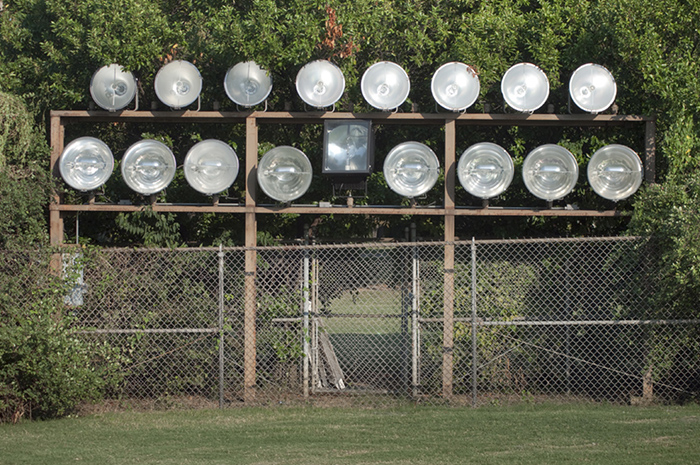Interview – Jonathan Bagby
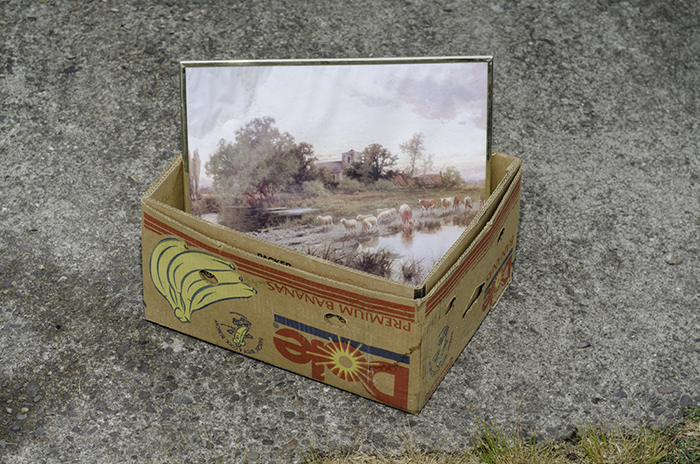
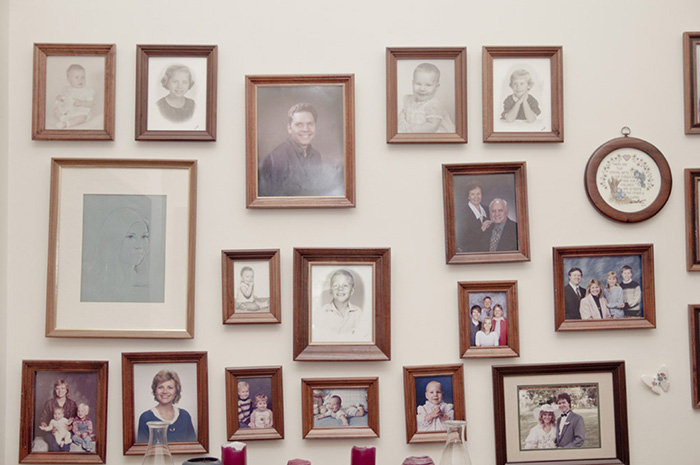
Jareh Das: You describe your approach to image-making as one that deconstructs objects within space employing a range of approaches that are historical and contemporary. Could you describe your approach to image-making? i.e. your initial selection/documentation and deconstruction of the image.
Jonathan Bagby: I have always had a tendency to pursue multiple ways of working at once and this is especially true in my latest series, Varying Degrees of Truth. Most of the time finished works start out as rough sketches in the form of objects sitting around my workspace, as written ideas on paper, or as a quick snapshot I revisit later. When I start photographing, I usually have a pretty good idea what I want the finished piece to look like, but I definitely leave room for the unexpected to happen. Sometimes things transition from idea to finished work pretty quickly or alternatively I have to leave things set up for a couple days or even longer, until I’m positive I have what I want. There are of course others that never resolve themselves as they turn out to not be that great of an idea in the first place, or perhaps just have never been completed. Occasionally, I stumble across something almost too good to be true out in the real world and photograph it there or recreate something similar at a later date. Other times an idea surfaces when I first see an object, but sometimes there is only an initial attraction to the flexibility of an item in the world of signs, which later resolves itself in the studio.
I think about the studio in a similar way to how Jeff Wall describes them in conversation with Lucas Blalock as ‘a set of relationships, not so much a specific kind of interior – it doesn’t have to be an interior at all… the studio as a site of actuality no different in principle from any other site’[Jeff Wall and Lucas Blalock: ‘A Conversation on Pictures’, Aperture, 2013]. I reframe the relationship between art, familiar objects, and one-of-a-kind found artefacts by manipulating them in real space and documenting them in photographs. My work references the techniques and aesthetics of scientific, advertising and snapshot photography, combining framing devices, mirrors, trompe l’oeil, and mise-en-scene to explore photographic representation in relation to perception and to exploit the slippage of meaning between object, image, and viewer. So when I am constructing images there are always dichotomies kicking around in the back of my head; interior/exterior, representation/fiction, camera/viewer, the space between a signifier and the signified and so on.
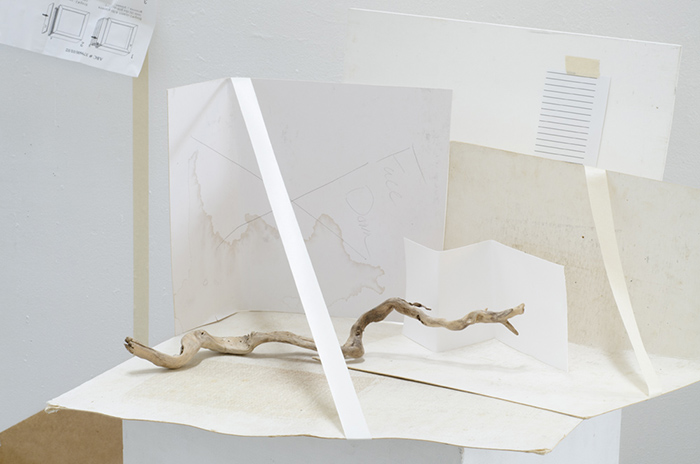
This idea of slippage or rather exposing the tensions that exist in categorising visual arts, I feel, is something ever more pertinent as contemporary artists work in ever more expanded fields within their practice. Photography could be anything from a small-scale work to an immersive installation, cinema as well as incorporating performance. What are your thoughts on expanded definitions of photography in relation to your practice and the works you make? (I’m thinking here of how ‘the image’ moves between moving image, photography within and outside of a frame etc., and varying modes of display.)
When the early conceptual artists adopted the photograph as a way of recording an idea, it signalled the end of the photograph’s status as an artistic medium in and of itself. As a continuation of this way of working, I use photography as a tool to record what I am constructing. I think about my practice as having a close relationship to sculpture. Occasionally, there is a performative element as well, such as my hand or footprints appearing in the frame; other times, the staging of the image is less apparent such as in the form of wrinkled backdrops, pieces of tape, precariously balanced objects, or meticulous arrangements.
Photography has a unique relationship with reality and is always many opposing things at once. Photographs are a window into another world and a flat surface, existing as both an object and an image. As Barthes and others have noted, photographs have a haunting relationship to the passage of time. Photography’s purpose is to have an indexical relationship to the real. Even though we know this is not entirely true, some times as viewers we choose to forget this fact. Photographs always contain a multiplicity of meanings.
Multiple perspectives are at play when creating and viewing an image. The intentions of the maker, the physical perspective of the camera relative to the subject matter, the visual/mental perception of the viewer and their position relative to the image being viewed all factor into understanding of a photograph. Thus, its creator, the subject, and the viewer shape the meaning contained in an image. Even trying to define what a photograph actually is in our contemporary context is a complicated task. Is a photograph something born as soon as you press the button on your camera or cell phone? What about when you make a selection of the best image from a group of similar images? Once it has been edited? Once it is shared on the web? Or does it not become a photograph until it is printed?
I personally don’t consider my photographs finished until they are framed, because of the way a frame helps them to become more of an object. I’m not sure it is possible to put forward a definitive explanation of what a photograph is and I find that lack of being able to pin it down exciting. As you mentioned, the status of the photograph is very much in question due to in incorporation by other mediums and the fact there are so many different ways of displaying an image. I think all the different possible forms a photograph can take (artistic and otherwise) allow artists to find inspiration in new places and borrow from a larger catalogue of imagery. So many contemporary artists are weaving together studio-based, documentary, snapshots, and archive photographs along with scanned documents, video, audio, sculpture, and painting. The way all of these different forms of images can complicate a body of work still holds plenty of interesting possibilities. However, what it all boils down to at the end of the day is that I haven’t lost faith in photography’s ability to surprise us.
With the series Varying Degrees of Truth, I was drawn to the idea of an image within an image (which is also an image that I am looking at through a computer screen) and wondered if it was, in some way, commenting about how meanings are formed and framed whilst directly referencing the physical act of framing or containing what is seen – and perhaps in a sense you’re presenting a work that is self-critical of the processes at play in its creation? Would you agree with this observation?
In ‘Untitled 38’, a nineteenth-century French landscape painting rests inside a Dole banana box. Both are commercially reproduced items and both contain something. The pastoral landscape has the illusion of pictorial depth and carries the baggage of both painting and the reproduction. In some ways the box also functions as a frame because it obscures part of the painting. The most natural presence in the photograph is a small patch of grass in the bottom right corner so there are also other things going on within the image about our relationship to nature through images. I would definitely agree with your observation that the content of the photograph is hinting at the way meanings are formed through the act of containing a frame within a box. Though perhaps self-critical isn’t the right phrase. I would more describe it as a self-awareness in the sense that it allows the viewer room for further consideration about the construction of images. Ultimately, I hope to provoke the viewer to have an experience with my photographs which leads them to have a more considered relationship with the images and objects they interact with on a daily basis. A perceptual experience that transcends the objects’ present and goes beyond the surface of the photographs. Frames within frames are one of the tools I use to imply further meaning and break apart the flat surface of an image. They create mental separations and relate back to the act of photographing in the sense that you always are making a selection of what to include and exclude. Frames create a visual separation and therefore encourage a viewer to consider them as separate layers of meaning in which the smaller one becomes contained in the other, creating interior and exterior relationships.
As you mention, it is also important to consider the edge of the browser, the edge of the computer screen, etc., as other frames for the work. Seeing a reproduction in a book, projected on a wall, or contained in a website on a screen is very different from seeing the real thing, but yet these reproductions are the way many of us experience art. There is an article in an older edition of Drain magazine called ‘Visualizing Lost in Translation: The Lacemaker’ by Gregory Minissale that I feel speaks to the idea of meaning unfolding from frames within frames in interesting ways.
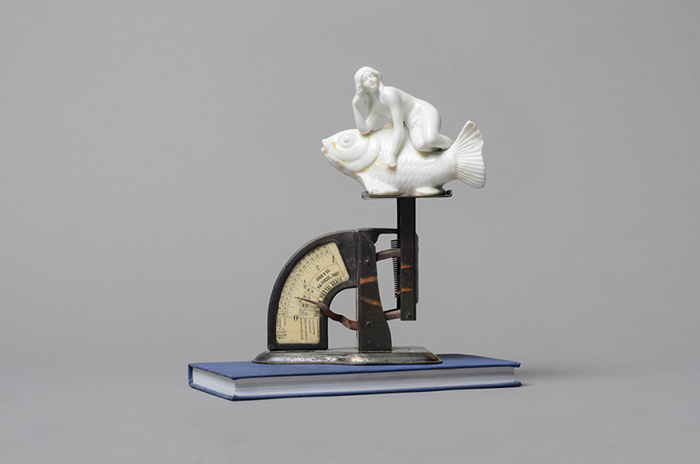
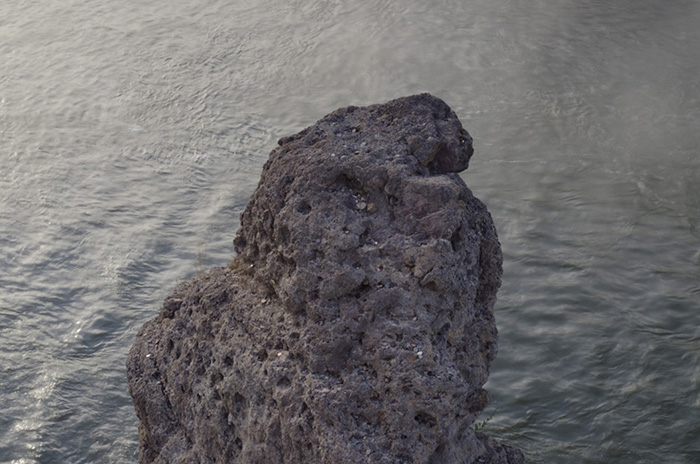
In your description of Mindscapes you talk about using ‘the familiar’ as a point of entry into an individual’s experience and your photography or rather the world you create. You also talk about creating a false perspective as a means of highlighting the detachment of the work from reality. Could you talk a bit about this intentional act of showing how the image is construct or wider questions about false realities created through photography?
First off, I feel I should point out that the Mindscapes series is a relatively old work. I stopped the series in 2011 and what is now present in the archive section of my site is a selection of images. However, that body of work was really crucial in terms of leading me to what I am making now. The idea of using the familiar as an entry point to engage a viewer’s personal history is something very much a part of my current pursuits and really took hold while developing Mindscapes. Every object intrinsically contains some history, a timeline of its trajectory of existence. Because I am staging images, my photographs have a different relationship to time than a documentary photograph or a snapshot does. By combining individual elements into finished photographs, a collision of the histories of multiple objects happens in which things that never occupied the same time and space are collapsed in photographic space, forever frozen together in photographic time. The act of isolating an object or set of objects on a plain background deprives it of its original context and certain continuity to a larger timeline. The photograph highlights the object and the object presents itself loudly. The possibilities that emerge through choices made in framing, lighting, and composition breathes new life into objects. I’m interested in the way a camera simplifies an object into a flat shape giving the photographer a great amount of control over the final perception of the object. The collapsing of a three-dimensional object into two-dimensional photographic space makes everything not visible to the camera disappear from the photograph as if it were never there in the first place. This limited knowledge of an object results in our understanding of scale and context becoming dependent upon clues contained in the image and our own mental history.
What influences your work? I get a sense of a myriad of disciplines/artists/approaches.
I received some excellent advice from one of my undergraduate photography professors in relation to influence. He cautioned me that as an artist I needed to be vigilant about the content I consume and the people I choose to spend my time with. This has become an idea I try to impart to my students. It is always important to pay attention to what and how you consume visual imagery and ideas. At the risk of sounding trite, I honestly believe in drawing influence from everything. I’m always looking at colour relationships, light, framing, etc., everywhere I go; from inside the supermarket, walking down the street on a sunny afternoon, to stopping to inspect a pile of junk on the side of the road at midnight. To answer your question more directly though: I see my work as situated in the lineage of Duchamp’s ready-made, and as deeply indebted to Robert Cumming’s use of perspective and photographic space, Joseph Kosuth’s explorations of language, and Christopher William’s awareness of the complexity of the studio image. I am really interested in the work of Caleb Charland, Zachary Dean Norman, Bryan Ulrich, Christian Patterson, Artie Vierkant, and Peter Happel Christian (to name a few!) because of their use of the photograph as tool to explore perception, materials, physics, truth, and the aesthetics of the archive. The way all of these artists, past and present, use combinations of representation, simulation, semiotics, cultural context, and everyday objects interests me because of photography’s relationship to the ‘real’. Speaking even more generally, I’m really interested in phenomenology, optics/vision, semiotics, Baudrillard, Derrida, Existentialism, and the effect of how new media/technology changes they way we think about space and place. With that said, I usually find it a bit counter-intuitive to speak about theory in direct relationship to art because I don’t think good art can be made about only theory. However, if you let it percolate into your understanding of the world at large, it will naturally find its way into the work. I have a background in philosophy from my undergraduate studies and would seek out those type of things on my own, but being in grad school definitely makes that relationship between theory and work more complicated. You are learning and making at such a fast clip that it becomes harder to separate the two. I find that a binge-and-purge type relationship to theory and working in general is the most fruitful for my own practice, meaning that sometimes I’m making lots of photographs, sometimes I am only reading/thinking instead of actively creating, and occasionally I’m not doing anything other than observing and plotting my next move.
Additionally, Mike Mandel/Larry Sultan’s Evidence, Koki Tanaka’s Everything is Everything, and the works of Walker Evans, William Eggleston, Stephen Shore, Gregory Crewdson, Eileen Quinlan, and Bryan Graf have an a significant impact on my practice, though their influence isn’t as clearly visible in the work. Some books that have been particularly important to my ways of thinking are: Mr Wilson’s Cabinet of Wonder by Lawrence Weschler; The Ecstasy of Things by Thomas Seelig and Urs Stahel; Each Wild Idea by Geoffrey Batchen; and Words Without Pictures by Charlotte Cotton and Alex Klien. I also want to acknowledge my thesis committee, Terri Warpinski, Dan Powell, and Rick Silva, along with countless other students and faculty as being absolutely crucial to my development an artist. I consider myself really lucky to have ended up in an MFA program full of so many selfless people and I would not be making the work I am without their influence.
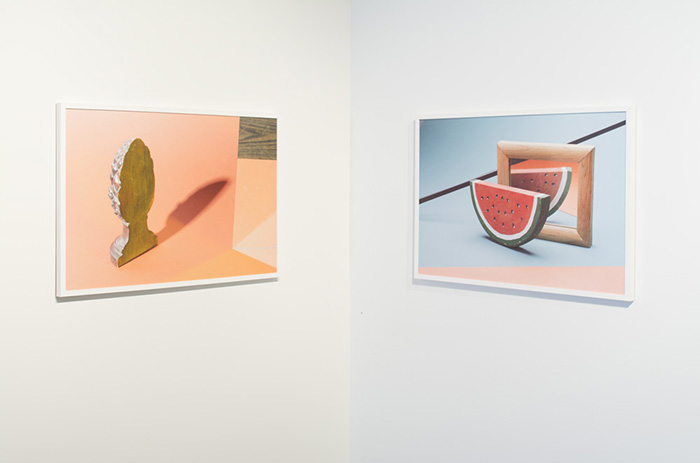
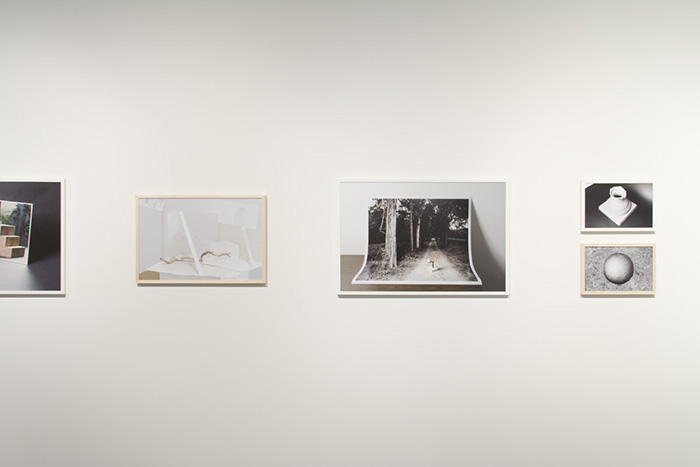
What are you currently working on and are there any forthcoming exhibitions you want to mention?
I just finished putting together a collection of photographs from my series Varying Degrees of Truth for my MFA thesis show at Disjecta in Portland, OR. It was a cathartic exercise to attempt to boil down a series of around sixty images to only a few for the show. I knew early on that I intended to play with scale, framing, and for the selection to be representative of the entire scope of the project’s explorations. I wanted the final photographs to be ‘read’ in either direction because of the flow of the gallery space. I ended up with thirteen images framed without glass or Plexiglas to diminish the separation between the viewer and the print. I used white frames without mats because I appreciate the way white can be both a neutral extension of the paper and can also visually fade away into the wall. I decided upon a scale of forty inches wide for the largest images. That largest size served as a base and two smaller sizes were interspersed between the larger ones. I made choices about the arrangement of them based on conceptual continuity, aesthetic considerations, and to create a visual dance between different types of photographic space. I tried out a couple new ideas such as integrating wooden frames in with the white ones. For instance, ‘Untitled 22’ is a photograph consisting of entirely paper and wood so I thought a wooden frame would draw attention to that and cause the viewer to think more about materials in some of the other images. I decided to use the corner in a way in which the mirror in the image appeared to be reflecting the other photograph. I also tried loosely pairing things together by differences in scale. For example, ‘Untitled 5’is a studio image of white paint and a used paintbrush, and in‘Untitled 6’part of a tree and a fence has been painted white. With these more obvious connections between images embellished by a scale relationship, I hoped to encourage viewers to search for the ties between other work which aren’t as apparent. In the end, I was pretty happy with how it all turned out, but I’m looking forward to showing the work in a solo show where I can include a bit more work and wrap around all the walls. I’ve also been seriously considering the book format as a way to resolve the work as well.
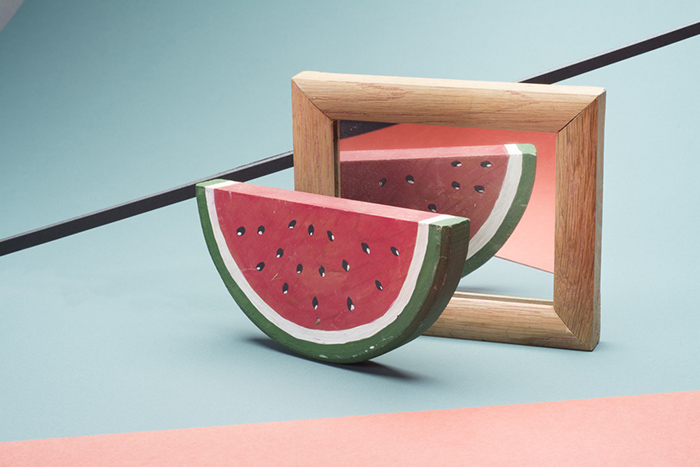
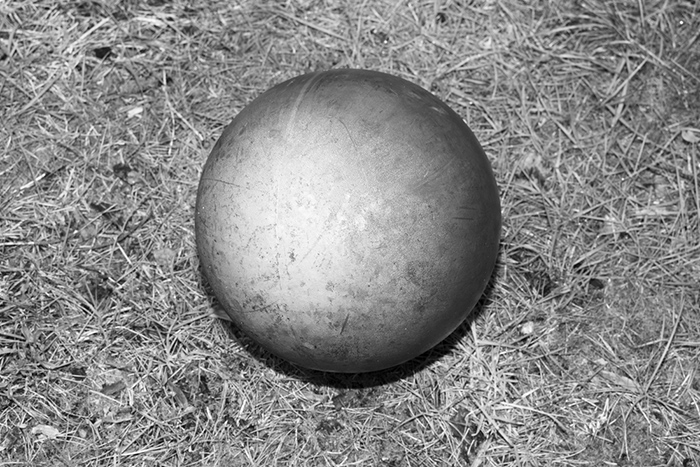
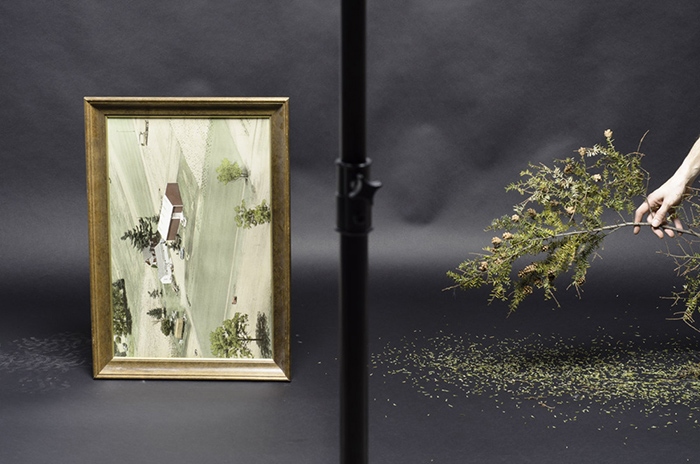
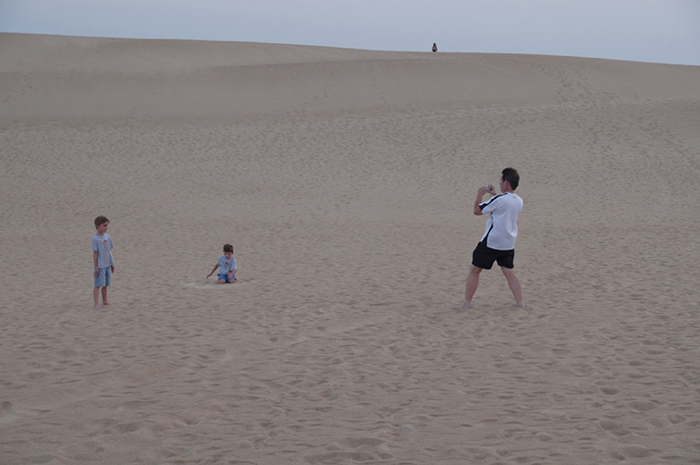
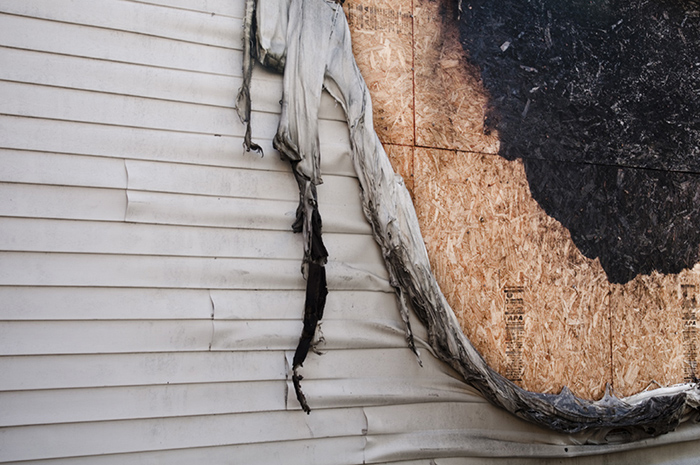
Untitled (from Urban Strangeness) 20 x 30 inches. Digital Photograph. Archival Pigment Print. 2011
